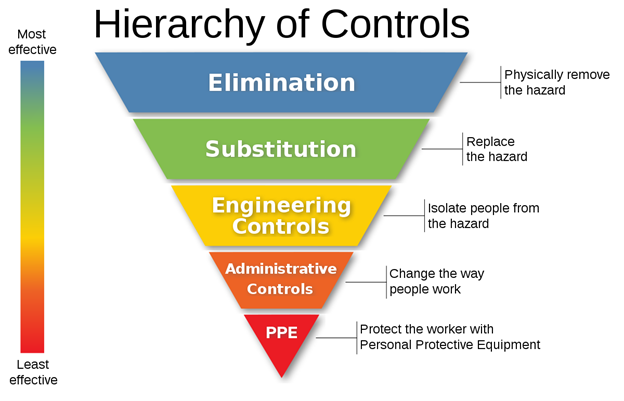Using Hazard Analysis to Identify and Protect Employees

Employees can be seriously injured or killed while performing non-routine work.
Non-routine work is defined as tasks performed irregularly or for the first time.
This type of work may expose employees to hazards not normally encountered during routine activities.
The simplest way to identify non-routine work hazards is perform a simple hazard analysis to identify the steps associated with the task, the hazards that may be encountered with each step, and the measures that will eliminate, reduce, or control exposure. Prior to performing non-routine work ask the questions above.
Non-routine work is defined as tasks performed irregularly or for the first time.

If one or more of these hazards are present, use the hierarchy of controls to address each hazard. The hierarchy of controls consists of the following control methods:
• Elimination involves physically removing the hazard from the work environment.
• Substitution involves replacing the hazard, for example replacing a hazardous chemical with a less hazardous or safe chemical.
• Engineering controls involve isolating workers from the hazard with the use of barriers such as machine guards.
• Administrative controls involve making changes to the way people work. Most commonly this involves job rotation or establishment of safe work procedures (SOPs).
• Administrative controls may involve the use of procedures, checklists to perform tasks, or pre-shift meetings to identify the highest risk task of the day.
PPE involves creating a barrier between a hazard and a person by wearing equipment such as gloves, hardhats, safety glasses, etc.
Source: Joe Mlynek, president and safety and loss control consultant for Progressive Safety Services LLC, Gates Mills, OH; 216-403-9669; and content expert for Safety Made Simple, LLC, Olathe, KS.
